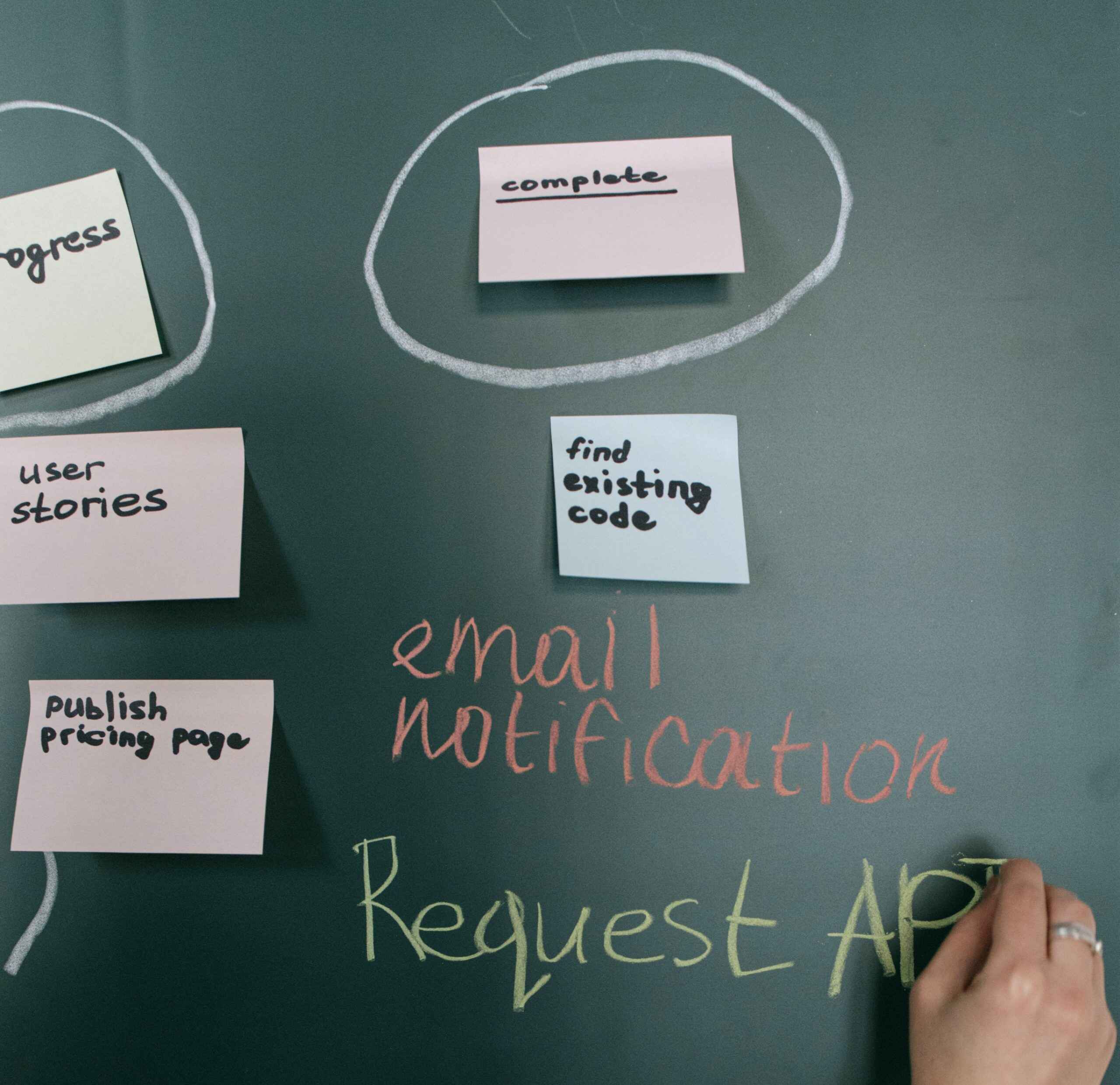We at WeSoftYou understand the importance of cross-platform app development and the associated costs. As a software development company with a proven track record, we have helped numerous clients bring their ideas to life. In this article, we will delve into the intricacies of cross-platform app development costs and provide insights on how to optimize them. Whether you are a founder, CTO, or CEO, this article will give you valuable information to make informed decisions for your organization.
What is Cross-Platform App Development?
Cross-platform app development involves creating applications that can run on multiple operating systems and platforms. This allows businesses to target a broader audience without the need to develop separate apps for each platform. By leveraging frameworks like React Native and Flutter, developers can write code once and deploy it across iOS, Android, and other platforms.
When it comes to cross-platform app development, there are a few key concepts to understand. One of these is the idea of “write once, run anywhere.” This means that developers can write code once and have it work on multiple platforms, saving time and effort. Another important concept is the use of frameworks like React Native and Flutter. These frameworks provide developers with the tools and libraries they need to build cross-platform apps efficiently.
Defining Cross-Platform App Development
Before delving into the costs, let’s define what cross-platform app development entails. It is the process of designing, coding, and deploying applications that can operate seamlessly on multiple platforms, such as mobile devices, web browsers, and desktops. Cross-platform development enables businesses to reach a wider user base by minimizing efforts and resources required for creating separate apps for each platform.
When it comes to designing cross-platform apps, there are a few considerations to keep in mind. One of these is the user interface. Since the app needs to work on different platforms, it’s important to design a user interface that is flexible and adaptable. This means using responsive design techniques and considering the different screen sizes and resolutions of various devices.
Another consideration is the performance of the app. Since cross-platform apps are built to work on multiple platforms, it’s important to optimize the code for each platform to ensure smooth performance. This may involve using platform-specific APIs or libraries to take advantage of the unique features and capabilities of each platform.
Benefits of Cross-Platform App Development
From our experience, cross-platform app development offers several key benefits. Firstly, it reduces development time and costs by allowing the reuse of code across platforms. Instead of having to write separate codebases for iOS and Android, developers can write code once and have it work on both platforms. This not only saves time but also reduces the cost of development.
Secondly, cross-platform development ensures consistent user experiences. Since the app’s look and feel remain consistent across different devices and platforms, users can easily switch between devices without feeling any difference in the app’s functionality or design. This can help improve user satisfaction and increase user retention.
Lastly, cross-platform apps are easier to maintain and update. Since changes can be implemented universally without the need for multiple codebases, developers can roll out updates and bug fixes more efficiently. This not only saves time but also ensures that all users, regardless of the platform they are using, have access to the latest version of the app.
In conclusion, cross-platform app development is a powerful approach that allows businesses to reach a wider audience and reduce development costs. By leveraging frameworks like React Native and Flutter, developers can write code once and deploy it across multiple platforms, saving time and effort. Additionally, cross-platform apps offer consistent user experiences and are easier to maintain and update. Overall, cross-platform app development is a valuable strategy for businesses looking to expand their reach and maximize their resources.
Factors Influencing the Cost of Cross-Platform App Development
Now, let’s explore the factors that influence the cost of cross-platform app development services. By considering these factors, you can better understand the investment required for your project.

Developing a cross-platform app involves several considerations that can impact the overall cost. Let’s delve deeper into some of the key factors:
Complexity of the App
The complexity of the app directly impacts the development costs. Apps with simple functionalities, basic UI designs, and limited integrations will generally incur lower costs compared to complex apps that require advanced features, custom animations, and intricate backend integrations.
For instance, if you are developing a basic e-commerce app with standard features like product listing, shopping cart, and payment integration, the development costs will be relatively lower. On the other hand, if you are building a social media app with real-time messaging, user-generated content, and complex algorithms, the costs will be higher due to the increased development effort and technical expertise required.
Before starting development, it is crucial to clearly define your app’s requirements and functionalities to assess the project’s complexity accurately. This will help you estimate the cost and allocate resources accordingly.
Choice of Platform and Technology
The choice of platform and technology plays a significant role in determining the development costs. Some platforms and technologies may require additional development efforts and expertise, resulting in higher costs.
When it comes to cross-platform app development, there are several frameworks available, each with its own pros and cons. The popular cross-platform frameworks like React Native and Flutter offer cost-effective solutions with a wide range of functionalities, making them ideal choices for many projects.
However, if you have specific requirements that can only be fulfilled by a native app, such as complex animations or access to device-specific features, the development costs may increase as native app development requires separate codebases for each platform.
It is essential to carefully evaluate your project’s needs and consult with experienced developers to determine the most suitable platform and technology stack that aligns with your budget and requirements.
Location and Size of the Development Team
The location and size of the development team also affect the costs. Development teams in different regions may have different pricing structures. For example, hiring a development team from a high-cost region like Silicon Valley may result in higher development costs compared to teams from other regions.
Additionally, the number of developers involved in the project impacts the development timeline and costs. A larger team may be able to deliver the project faster, but it will also increase the overall development costs. On the other hand, a smaller team may take longer to complete the project, but it can be a more cost-effective option.
Collaborating with an experienced software development company, like WeSoftYou, allows you to tap into a diverse talent pool and benefit from cost-effective solutions. Such companies often have teams located in different regions, enabling them to offer competitive pricing without compromising on quality.
By considering these factors, you can make informed decisions about your cross-platform app development service project and effectively manage the associated costs.
How Much Does Cross-Platform App Development Cost?
Developing a cross-platform app involves various stages and considerations. Let’s now break down the cross-platform app development costs to gain a better understanding of where your investment goes.
When it comes to creating a successful app, design and user interface play a critical role in user engagement and overall app success. The design phase includes creating wireframes, designing UI elements, and developing prototypes. These design and user interface costs depend on app complexity, the number of screens, and the need for custom graphics.
Once the design is finalized, the development and coding phase begins. The costs associated with development and coding are influenced by the complexity of the app and the number of features that need to be implemented. This phase encompasses activities like frontend and backend development, integration of APIs and third-party libraries, error handling, and performance optimization. Skilled developers work diligently to ensure that your app functions seamlessly across different platforms.
Before releasing an app to the market, it is imperative to conduct thorough testing and quality assurance. These costs include various testing activities like functionality testing, usability testing, compatibility testing, security testing, and performance testing. Testing ensures that the app functions as intended and provides an optimal user experience. Quality assurance experts meticulously examine every aspect of the app to identify any potential issues or bugs that may hinder its performance.
Furthermore, ongoing maintenance and updates are crucial to keep your app up-to-date and compatible with the latest operating systems and devices. These costs should also be considered when budgeting for cross-platform app development.
It is important to note that the costs mentioned above can vary depending on the complexity and requirements of your app. It is advisable to consult with experienced app development agencies or professionals to get a more accurate estimate of the costs involved in developing your specific cross-platform app.
Ongoing Costs for a Cross-Platform App
When it comes to cross-platform app development, it’s important to not only consider the initial investment but also the ongoing costs associated with maintaining and updating the app. These ongoing costs are crucial to keep up with emerging technologies, address any bugs or issues, and ensure the app remains competitive in the market.
One of the significant ongoing costs is maintenance and updates. Constant attention is required to enhance the app’s performance, fix bugs, and address compatibility issues with new operating system versions or device models. The complexity of the app and the frequency of updates will determine the extent of these ongoing costs.
But it doesn’t stop there. Marketing and promotion expenses are also essential to ensure your app reaches its target audience and stands out in the competitive market. App visibility and user acquisition are crucial for success. This means investing in activities like app store optimization, social media marketing, online advertisements, and even influencer collaborations. These efforts are necessary to drive user engagement and increase app installs.
Another ongoing cost that should not be overlooked is customer support and service. Providing excellent customer support is vital for ensuring user satisfaction and retention. This means allocating resources and budget to customer support channels such as chat support, email assistance, and bug reporting and tracking systems. By investing in customer support, you can address user concerns promptly and maintain a positive relationship with your app’s user base.
As you can see, the ongoing costs for a cross-platform app go beyond the initial development phase. Maintenance and updates, marketing and promotion, and customer support and service are all important factors to consider. By factoring in these ongoing costs, you can better plan and budget for the long-term success of your app.
How to Reduce Cross-Platform App Development Costs?
To optimize cross-platform app development costs, consider the following strategies:
Efficient Planning and Design
Thorough planning and efficient design help reduce development costs. Clearly define your app’s objectives, features, and target audience. Simplify UI and UX elements without compromising user experience.
When planning your app, it’s important to conduct thorough market research to understand your target audience’s needs and preferences. By identifying the key features and functionalities that will resonate with your users, you can streamline the development process and avoid unnecessary expenses.
In addition, efficient design practices can significantly impact the cost of cross-platform app development services. By simplifying the user interface (UI) and user experience (UX) elements, you can reduce the complexity of the app, making it easier and faster to develop. However, it’s crucial to strike a balance between simplicity and functionality to ensure a positive user experience.
Outsourcing Development Tasks
Outsourcing development tasks can significantly lower costs. Partnering with a trusted software development company, like WeSoftYou, allows you to access skilled resources at a fraction of the cost compared to hiring an in-house development team.
When outsourcing development tasks, it’s important to choose a reliable and experienced partner. Look for a company that has a proven track record in cross-platform app development and has a team of skilled developers who specialize in the technologies you require.
By outsourcing, you can benefit from cost savings in various areas. For instance, you can avoid the expenses associated with recruiting and training an in-house team, as well as the overhead costs of maintaining an office space and infrastructure. Additionally, outsourcing allows you to tap into a global talent pool, giving you access to diverse expertise and perspectives.
Utilizing Open Source Resources
Utilizing open-source libraries, frameworks, and tools can reduce development efforts and costs. Open-source resources are community-supported, ensuring continuous improvements and bug fixes.
Open-source resources provide developers with a wealth of pre-built components and functionalities that can be easily integrated into their cross-platform apps. By leveraging these resources, developers can save time and effort, as they don’t have to build everything from scratch.
Moreover, the open-source community actively contributes to the development and maintenance of these resources, ensuring that they are constantly updated and improved. This means that developers can benefit from bug fixes, performance enhancements, and new features without incurring additional costs.
However, it’s important to carefully evaluate and select the open-source resources you use in your app. Ensure that they have a strong community support, active development, and a solid reputation for security and reliability.
Conclusion
In conclusion, cross-platform app development offers immense value for businesses targeting a wide user base across different platforms. Although there are costs associated with development and maintenance, the benefits outweigh the investment. By partnering with an experienced software development company like WeSoftYou, you can efficiently manage costs while leveraging cutting-edge technology and expertise.
FAQ
The cost of cross-platform app development services varies depending on various factors such as complexity, features, platform choice, and development team size. Developing a cross-platform app involves creating a single codebase that can run on multiple platforms, such as iOS and Android, which can save both time and money compared to developing separate native apps for each platform. However, the cost can still vary significantly based on the specific requirements of your app. Factors such as the complexity of the app’s design, the number of features it includes, and the level of customization required all contribute to the overall cost. Additionally, the size and expertise of the development team can also impact the cost. To get an accurate estimate for your project, we recommend contacting WeSoftYou for a free consultation and project estimation. Our team of experts will assess your specific needs and provide you with a detailed breakdown of the costs involved.
The development timeline for a cross-platform app depends on various factors, including the project’s complexity, features, and team size. Developing a cross-platform app involves using frameworks like React Native or Flutter, which allow developers to write code once and deploy it on multiple platforms. This approach can significantly reduce development time compared to building separate native apps for each platform. However, the actual time required can vary based on the specific requirements of your app. Simple apps with basic features can be developed relatively quickly, taking only a few weeks. On the other hand, more complex apps with advanced functionality may take several months to complete. It’s important to note that proper planning and execution are crucial for ensuring a smooth development process and timely delivery. Our team at WeSoftYou has extensive experience in cross-platform app development services and can provide you with a realistic timeline based on your app’s unique requirements.
Absolutely! Cross-platform apps are designed to be easily upgradable. One of the advantages of using frameworks like React Native or Flutter is that they offer a streamlined process for updating and maintaining apps across multiple platforms. With proper planning and a robust development team, you can seamlessly update your app with new features, bug fixes, and improvements. Whether you want to add new functionalities, enhance the user interface, or optimize performance, our team at WeSoftYou can assist you in making updates to your cross-platform app. We follow industry best practices and utilize efficient development methodologies to ensure that your app remains up to date and competitive in the ever-evolving mobile landscape.
Ready to embark on your cross-platform app development journey? Contact WeSoftYou today for a free consultation and project estimation. Our team of experts will guide you through the process and provide tailored solutions that align with your business goals. We understand that every app is unique, and we are committed to delivering high-quality, cost-effective solutions that meet your specific requirements. Don’t miss out on the opportunity to reach a wider audience with a cross-platform app. Contact us now for a free consultation or project estimation!





















